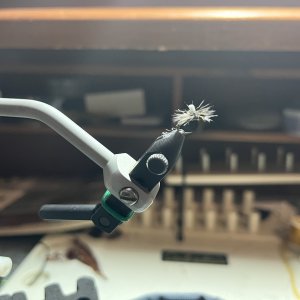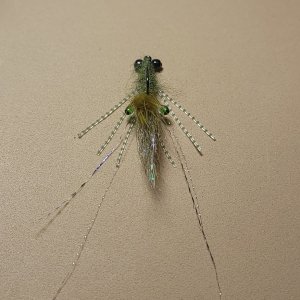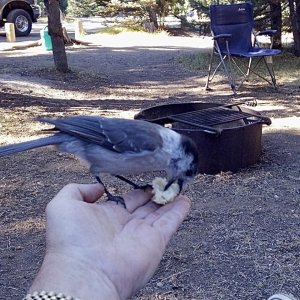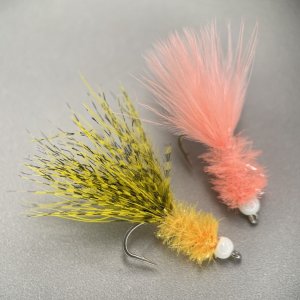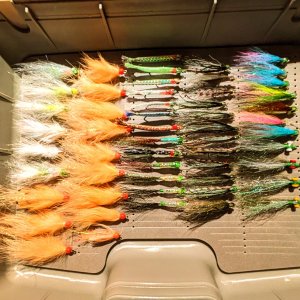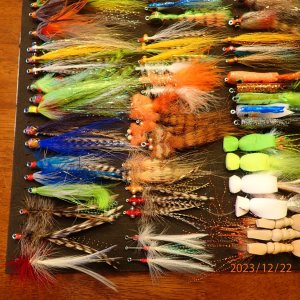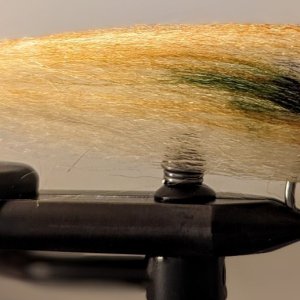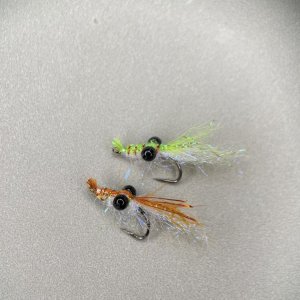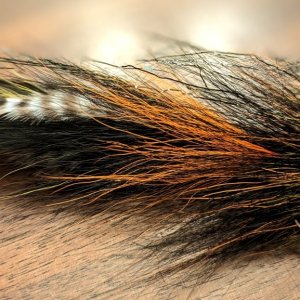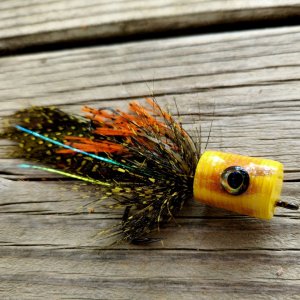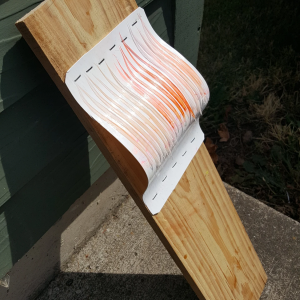My biggest weakness when it comes to fly fishing is definitely fly selection. I like saltwater because it’s kinda easy: Look at the water around you, pick some baitfish looking patterns, try some top water stuff, doesn’t seem hard to mess up. Freshwater is a little daunting though. There are just so many options when you walk into a shop. When you ask for fly suggestions, you get a different suggestion depending on who you ask. What can I do to start cracking the code, so that before I head out on a trip I can pack flies that I feel confident with?
You are using an out of date browser. It may not display this or other websites correctly.
You should upgrade or use an alternative browser.
You should upgrade or use an alternative browser.
Learning fly selection
- Thread starter speedbird
- Start date
If the fish are sipping flies on or near the surface,,making visible rings, then they are looking up. Don't fish deep at that time. If using a bobber let only a couple of feet of line below it. Or slowly strip a small light colored wet fly just under the surface..This hatch seems to go on for hours with dozens at a time in view. I tried for a short time today. There were fish within casting range and I tried a couple different chironomids one under a slip bobber on spinning rod and the other fly gear. I tried a less buggy pattern stripped, no luck. I tried the bottom fly here with the pink bead.
View attachment 105124
That's a midge, adult chromonoid. The rising fish are eating them as they break their shuck and try to fly away..I struggle with fly selection and confidence in casting what I tie on. Mostly a gear guy but trying to get more serious about catching fish on flies.
Recently at my local lake there have been several of these adult bugs flying about. When trout have been rising I have casted a few different things at them including the two in the picture. The chironomid below an indicator. From the boat I also casted and stripped a small muddler. I ended up actually catching fish casting spoons instead.
What would you suggest instead to present them given the hatch? Are my flies simply too large?
View attachment 105068
To match that hatch on topwater, try a fly called Lasha’s Raccoon.I struggle with fly selection and confidence in casting what I tie on. Mostly a gear guy but trying to get more serious about catching fish on flies.
Recently at my local lake there have been several of these adult bugs flying about. When trout have been rising I have casted a few different things at them including the two in the picture. The chironomid below an indicator. From the boat I also casted and stripped a small muddler. I ended up actually catching fish casting spoons instead.
What would you suggest instead to present them given the hatch? Are my flies simply too large?
View attachment 105068
I will try to tie some of these. ThanksTo match that hatch on topwater, try a fly called Lasha’s Raccoon.
Most rivers are not that complicated. Maybe some very technical spring creeks or heavily pressured fish but on most bodies of water, if you are consistently struggling, you’re probably over thinking it. Start with a few basic patterns, catch fish on those and then expand from there. Elk hair caddis (a few different sizes and color variations), wooly buggers (again, mix up sizes and colors), comparaduns (imo one of the most versatile flies a river fly fisher can carry)….great dry fly pattern for various hatches and you can fish it as an emerger very effectively as well (again, various sizes and colors), stonefly nymphs (beaded and unbeaded) and some pheasant tail bumps (beaded and unbeaded) maybe an ant pattern.
Throw in a few other things for good measure (leach patterns though a bugger will do, paraduns, other terrestrials like beetles and hoppers, some golden stones or other basic stonefly patterns, hares ears) and experiment…. a lot.
You can read all you want and talk the ear off of every fly shop employee you encounter but nothing comes close to on water experience having success and more importantly failure. IMO one of the great things about fly fishing is all the different things you can catch fish on and figuring out what and when consistently is a huge part of the appeal.
Throw in a few other things for good measure (leach patterns though a bugger will do, paraduns, other terrestrials like beetles and hoppers, some golden stones or other basic stonefly patterns, hares ears) and experiment…. a lot.
You can read all you want and talk the ear off of every fly shop employee you encounter but nothing comes close to on water experience having success and more importantly failure. IMO one of the great things about fly fishing is all the different things you can catch fish on and figuring out what and when consistently is a huge part of the appeal.
In moving water, I'm pretty confident in saying that a generic fly presented on the nose of a fish that is unaware of the angler's presence will get bit plenty of times, even if it's the "wrong" fly. The super high fish numbers of competition angler's prove that.
I'd get the usual flies for your area and concentrate more on stealth and presentation.
I'd get the usual flies for your area and concentrate more on stealth and presentation.
I'm in no way experienced. This is year 3 of serious fly fishing.
Dry flies on rivers, I'm sort of a creature of habit. I have my progressions.
Generally start with a size 12-14 parachute. Purple haze usually. If I don't get bites, I'll move to a 10 or so, usually for a short time, as that rarely works. Then I drop down to a size 16-18 elk hair caddis. Or some type of emerger. This seems to be the ticket more times than not.
I have a stream in montana that won't sniff at anything larger than a 16 half the time.
I have a stream in Idaho that has stiffed me until I put emergers on. until usually late June it seems. Then they bite just about anything that floats.
I rarely match a hatch. I carry a million types of flies, and use 4-5 types max on a trip. Same 4 or 5 flies time after time.
Wets I need more work on to say. not enough experience. Stoneflies are my best ticket by far.
Can't catch a fish in a lake on flies, except with a San Juan worm lol.
Dry flies on rivers, I'm sort of a creature of habit. I have my progressions.
Generally start with a size 12-14 parachute. Purple haze usually. If I don't get bites, I'll move to a 10 or so, usually for a short time, as that rarely works. Then I drop down to a size 16-18 elk hair caddis. Or some type of emerger. This seems to be the ticket more times than not.
I have a stream in montana that won't sniff at anything larger than a 16 half the time.
I have a stream in Idaho that has stiffed me until I put emergers on. until usually late June it seems. Then they bite just about anything that floats.
I rarely match a hatch. I carry a million types of flies, and use 4-5 types max on a trip. Same 4 or 5 flies time after time.
Wets I need more work on to say. not enough experience. Stoneflies are my best ticket by far.
Can't catch a fish in a lake on flies, except with a San Juan worm lol.
http://flyfishingentomology.com/WA Hatch Chart.htmIs there any sort of accurate hatch chart for Washington?

